The distant future of our solar system
If we bring the history of the universe from the moment of the Big Bang to today, to the scale of “one universal year,” how would our future look like then?
To love something, you must imagine that you can lose it.
- G. K. Chesterton
One of the most interesting facts related to the Universe is that, despite the short period of observations, only a few hundred years, people who studied the main components and forces that make up us and the rest of the Universe, were able to accurately understand it.

The laws of nature are almost completely understood. We know that the age of our Universe is approximately 13.8 billion years, despite the fact that the duration of our observations varied from a few fractions of a second to several years. Our research into the laws of nature allows us to look into the remote history of the Universe and understand what it was 13.8 billion years ago, and how it came to such a state.
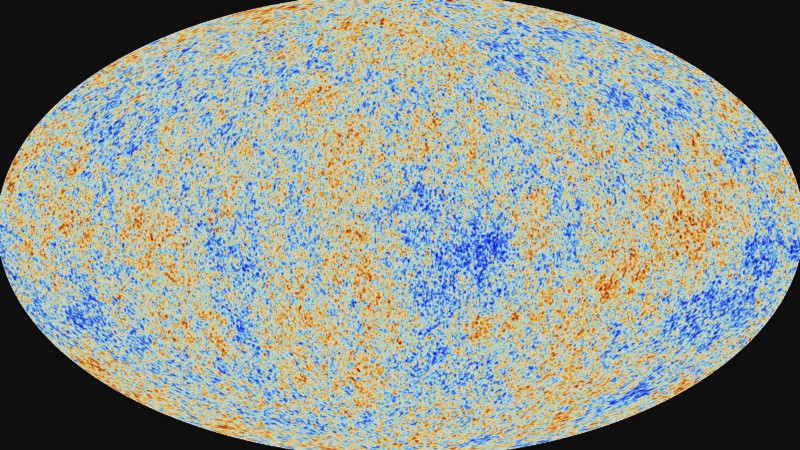
')
This is all the more impressive if we switch to logarithmic thinking. In the distant past of the Universe, when it was only 380,000 years old, it was still too hot for neutral atoms to form. This we see in the residual luminescence of the Big Bang - in the relic radiation! This was at a time when the age of the universe was 0.0028% of today's, or 1/36 300 of today's age.

We can extrapolate further, at the time when the first atomic nuclei appeared in the Universe, when we were only 200 seconds old, or 4 × 10 -16 of the current age. And even before it was so hot that matter / antimatter pairs were born spontaneously when the age of the Universe was 10 -18 from its current age, and even further when all the particles we create in accelerators, including the Higgs boson, were often found in the Universe, energies maximally accessible to our scientific understanding, at the age of 10 -28 from its current,
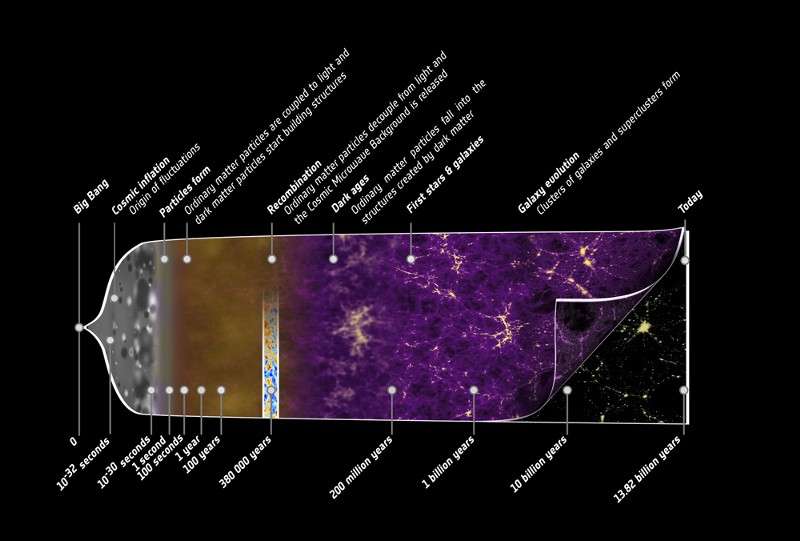
Recently, I made a picture showing important events in history not only on a logarithmic scale, but also on a compressed linear scale: what would our history look like if, instead of 13.81 billion years old, it was compressed before the calendar year. The result was amazing and very well demonstrates the time perspectives that we can appreciate.

Some events from the scale:
• On January 1, at 0:14, relic radiation is emitted, and the first neutral atoms are formed
• January 3, the first stars appear
• January 13th emits light from the farthest galaxies we see.
• February 14, large-scale structures begin to form
• On March 6, the first formed galactic clusters appear.
• On September 3, the Sun and the protoplanetary disk are formed
• September 21, the first life forms appear on Earth
• On October 12, Mars is killed, losing the atmosphere
• On December 2, the first organisms that reproduce sexually appear on Earth.
• December 30 at 6:25 am the last Great Extinction occurs, including dinosaurs
• December 31 at 11:53 pm the first people appear.
• December 31 at 23:59:59 people go into space
But this picture tells only about the past history. What about our future? As the famous physicist Niels Bohr said, it is very difficult to make predictions, especially concerning the future.
I can say that nothing particularly pleasant awaits us. Personally, I will live until about 00: 00: 00.1 on January 1 of the “second Universal year”. The constellations known to us will be more or less recognizable until 0:02, and in a few minutes the next ice age will begin.

But this all happens so quickly due to a very strong timeline compression. Why be distracted by such small-scale events, if we can think big? Our laws of physics allow us to extrapolate not only into the past, but also into the future. And we can start with the largest angular size of the object in our night sky: the Andromeda galaxy.
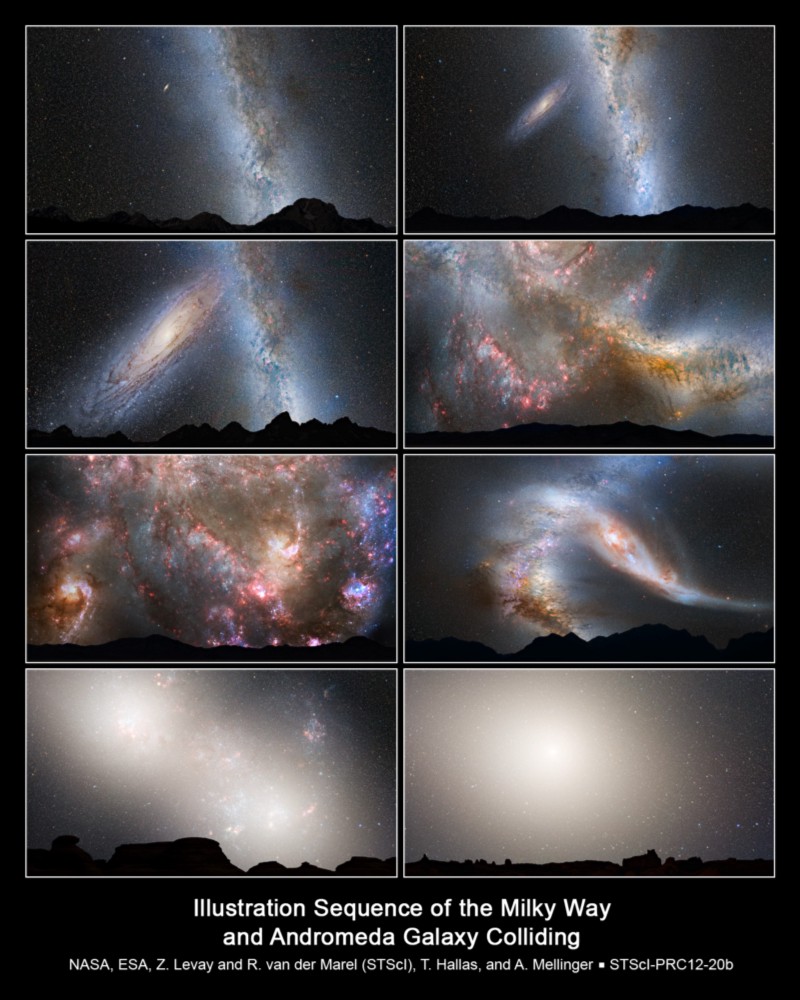
How the Milky Way and Andromeda will collide
After 3-5 billion years, the Andromeda galaxy (and, very possibly, the smaller Triangle galaxy) will merge with the Milky Way, which will lead to a fundamental change in the structure of our galaxy and the night sky. Now it is 2.5 million light years away, but it is moving towards us at a speed of 43 km / s, and judging by the best simulations, the first collision and the explosive formation of stars (the 4th frame in the image above) will happen in 3, 8 billion years - or 10 April of the “second universal year”. It will end in 5.5 billion years, that is, on May 25.
Because of gravity, the local group of galaxies will merge with us as a result, but because of dark energy, all other galaxies and clusters - not connected with us today - will escape from us and leave the observed part of the Universe in billions or hundreds of billions of years.
But neither the accelerated expansion of the Universe, nor the collision of galaxies will affect our solar system. By the way, do you know how many stars are likely to collide with each other due to the merger of the two largest galaxies of our local group? Only six of the trillion! So we better focus on our corner of space in the solar system and see what happens specifically with us.
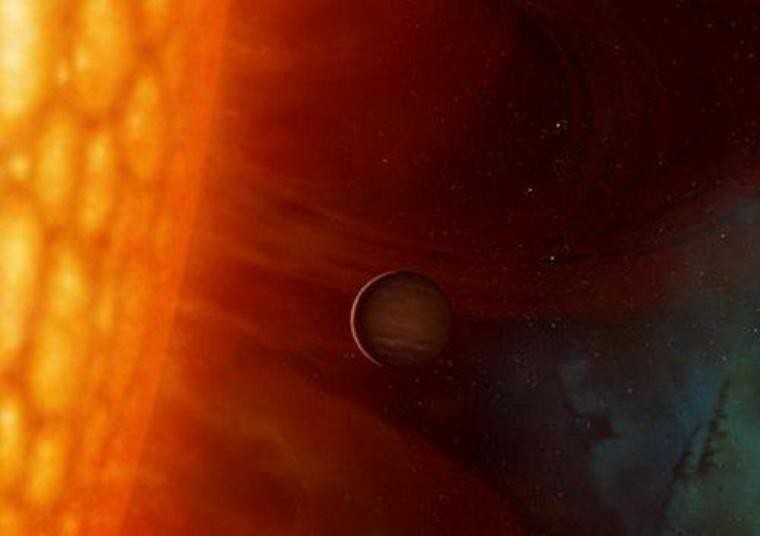
The sun will warm up with age and boil the oceans after about 1-2 billion years - that is, February 8, 2 years, plus or minus 2 weeks - and destroy life on Earth. In 5-7 billion years, the fuel in the core of the Sun will run out, causing it to turn into a red giant, engulfing Mercury and Venus. It will happen on June 8, plus or minus a month. Due to the peculiarities of stellar evolution, the Earth / Moon system will be thrown out, and we will be spared the fate of our internal neighbors.
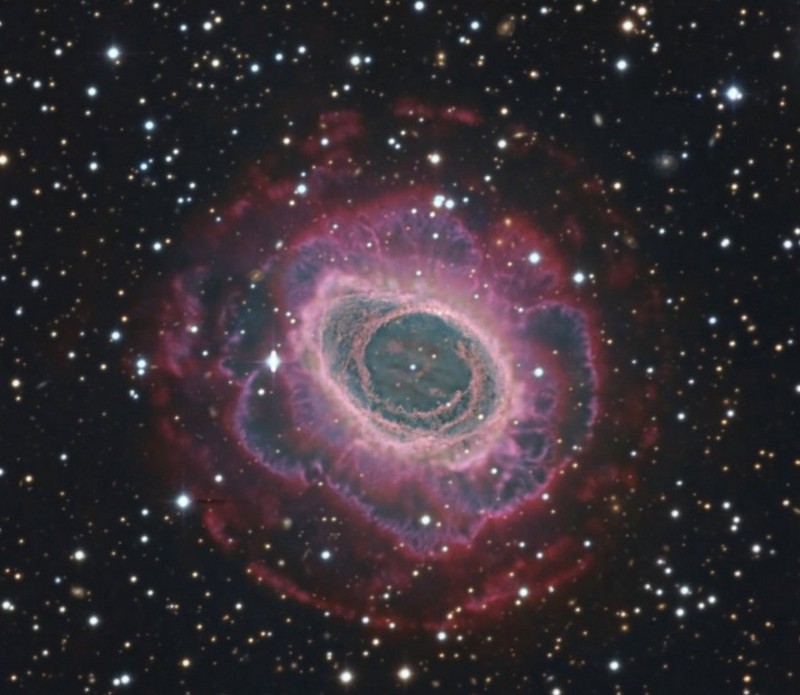
After burning the remaining nuclear fuel - mainly helium - the Sun will reject the upper layers, causing a planetary nebula to appear, and its core will shrink and turn into a white dwarf. Such is the fate of almost all the stars in our universe. But the planets will still revolve around the cold and dim stellar corpse, and this process will end in 9.5 billion years, or on September 8, 2 years.
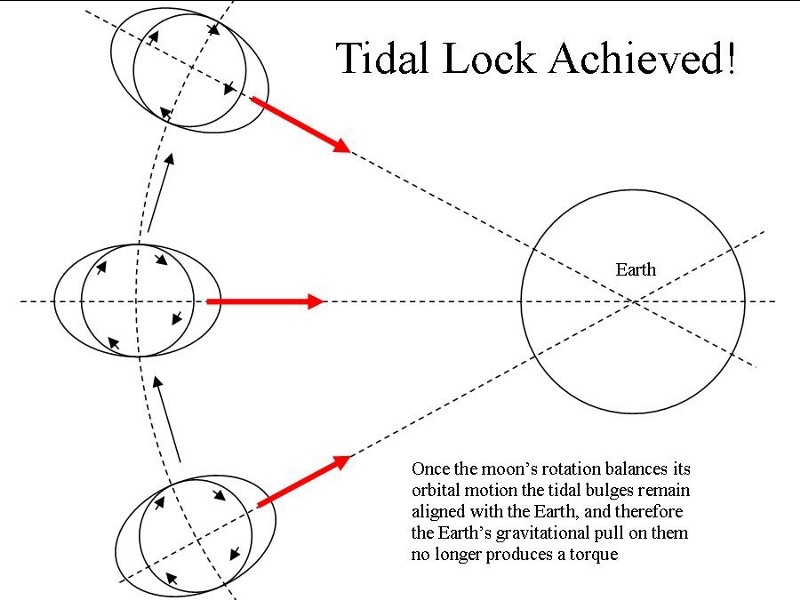
All this time, the Earth will continue to rotate around the Sun, and the Moon - to be attracted to the Earth. It is because of this that there is a rotational moment - due to the influence of an external force on a rotating object. As a result, the Moon moves away from the Earth, simultaneously slowing down its speed of rotation. The slowdown will be difficult to notice - the length of the day is reduced by only 1.4 milliseconds over a hundred years. But we have time.
And after 50 billion years, the orbital period of the moon will be 47 days (compared with today’s 27.3), and our 24-hour day will also slow down and become equal to 47 today’s days. At this moment, the Earth and the Moon will be tidal with each other, that is, they will maintain the same position in each other's sky. This will happen on August 14 of the "5th universal year."

White dwarfs will eventually turn black, cooling and radiating all the energy. It will take a lot of time: about 10 16 years in my estimation, or about a million times longer than the current age of the Universe. All their atoms will be in their places, just their temperature will be slightly higher than absolute zero. At this time, the night sky will be black, since all the stars of our local group will burn out. This will happen in about 724,000 ecumenical years!

The sky will look something like this. Yes, very dark.
The galaxy will turn into a rather cruel place. Stars are extremely small compared to the distances between them - there is only a 0.1% chance that a star like the Sun will collide with another star throughout its existence. But between us, Andromeda and the other members of the local group, there are about a trillion stars and stellar remains. In this chaos, a typical star system can exist for a very long time without colliding with anything, but we have time.
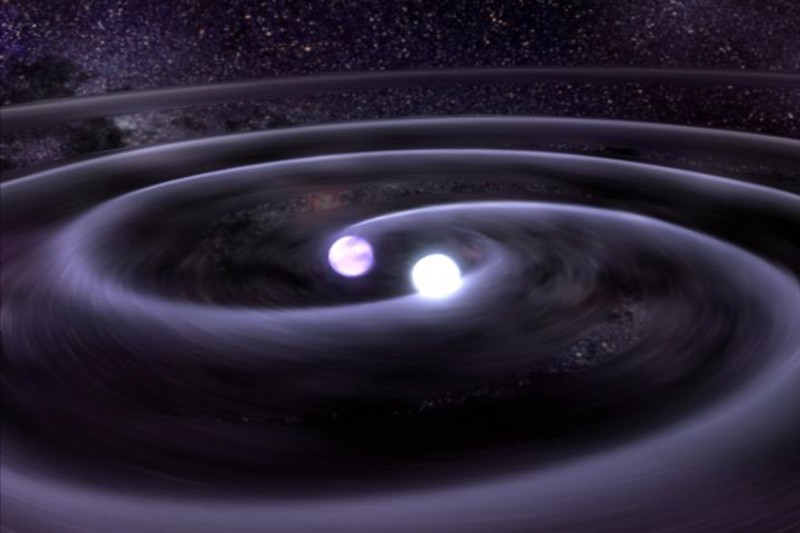
After about 10 21 years, the black dwarf in the center of the solar system will face another black dwarf, which will lead to the appearance of a supernova type Ia, and destroy the remnants of the solar system. This will happen in the $ 100 billion universal year - which is already greater in the universe years than the present age of the universe in the Earth years!
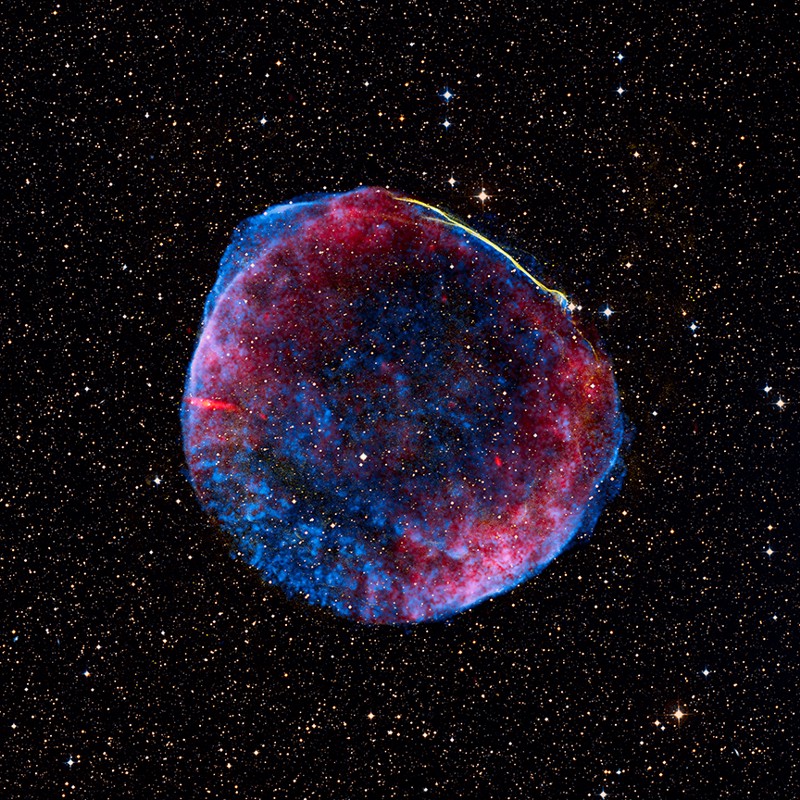
At least it can happen. This may be the end of the life journey of many stars in our local group, but not all. After all, there is another process that, according to my calculations, is more likely in our case - this is a gravitational ejection of a star from a local group, known as “violent relaxation]. In the presence of a multitude of bodies in chaotic orbits, sometimes one of them sharply leaves the orbit, and the rest are connected even more strongly.
It periodically occurs in globular clusters and explains both their compactness and a large number of separately living blue stars - or old stars united in a group - at the core of these ancient relics!
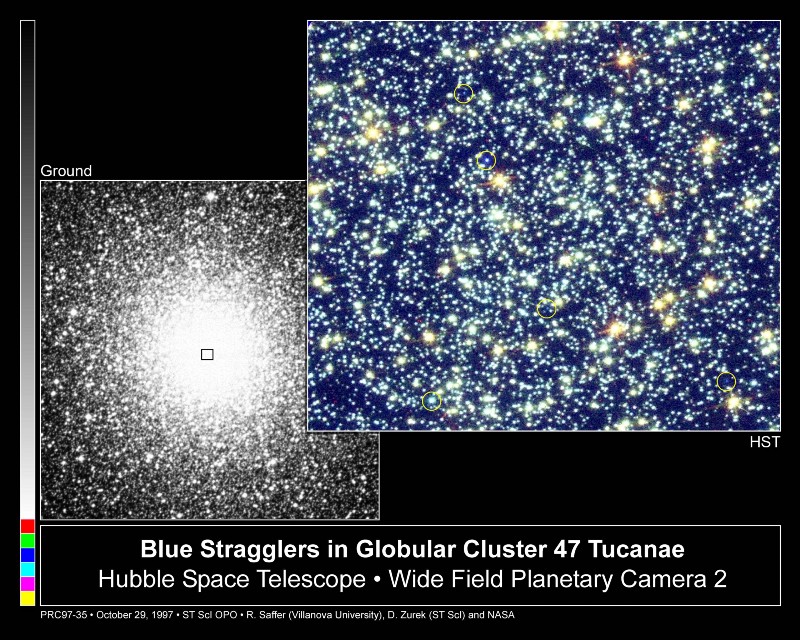
If they throw us away, what then? Will the remaining planets revolve around a dead star in the center of the solar system forever?
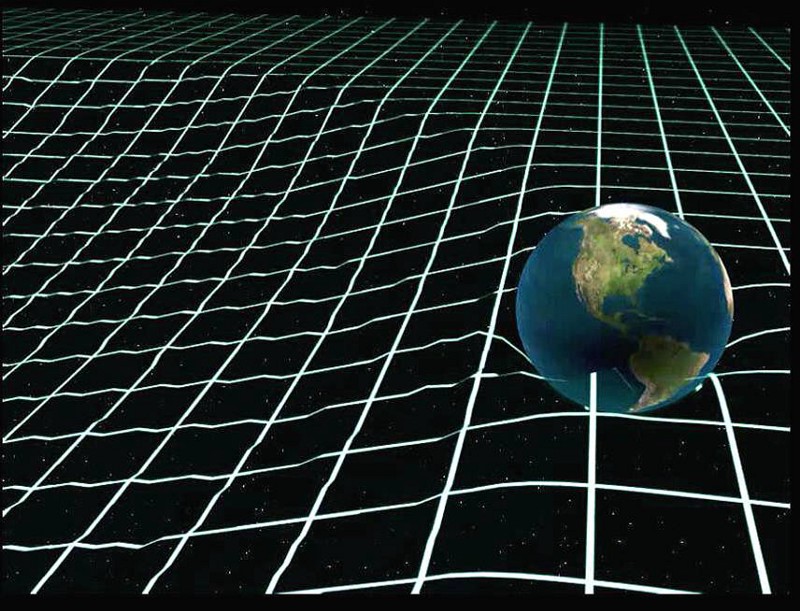
If this happens, the Universe will have enough time to decide what to do with our system. And we would have remained in this state forever, if it were not for this terrible gravitational radiation!
Our orbits will decrease very slowly with time. It may take a very long time, about 10 150 years, but as a result, the Earth, and all the planets, will reduce their orbits and spiral down to the central mass of the Solar System. At this time, the difference between ordinary years and universe years will no longer be of principle - just subtract 10 from the degree, and get 10,140 universe years.
Even more time, 10,200 years, if not more, would have taken the spiral fall of the last few stars of the local group on the central mass left over from the confluence of the Milky Way and Andromeda. But this opportunity does not bother me anymore.
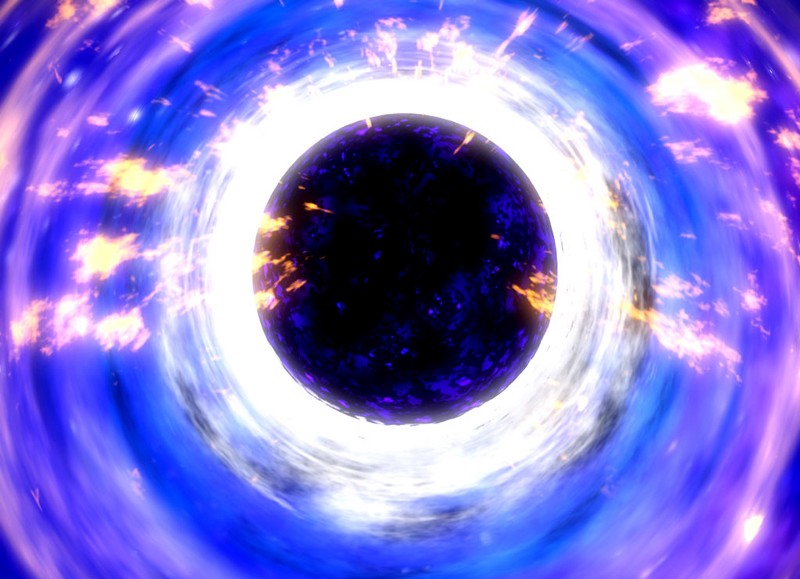
After all, this will not happen! Since the black hole in there is already evaporating due to Hawking radiation! It will eliminate even the most supermassive black holes in the Universe in just 10,100 years, and black holes of the solar mass - in 1067 years. So, if there are no other mechanisms of destruction, these are the largest time intervals at which that which resembles stars, galaxies, black holes and solar systems can survive.
Here it is, the distant future of our solar system, based on the laws of physics known to us today!
Source: https://habr.com/ru/post/399783/
All Articles